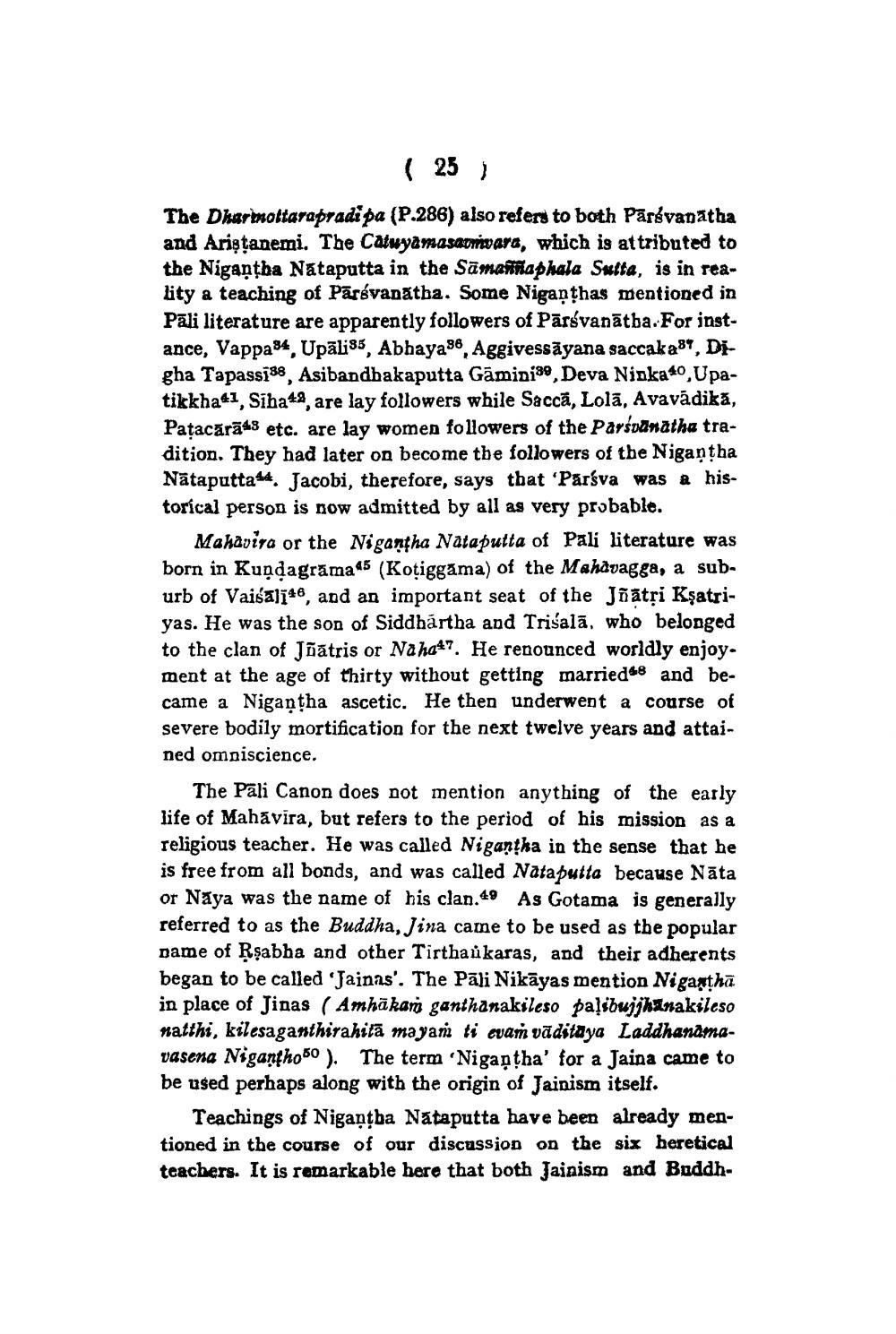________________
( 25 )
The Dkarmottarapradi pa (P.286) also refers to both Pārévanatha and Aristanemi. The Catwyamasaomara, which is attributed to the Nigantha Nataputta in the Samannaphala Sulta, is in reality a teaching of Pārsvanatba. Some Nigaạthas mentioned in Pāli literature are apparently followers of Pārsvanātba.For instance, Vappa84, Upāli85, Abhaya88, Aggivessāyana saccaka87, Digha Tapassi88, Asibandhakaputta Gāmini39, Deva Ninka40, Upatikkha41, Siha49, are lay followers while Sacca, Lolā, Avavādikā, Patacārā4s etc. are lay women followers of the Parsvanatha tradition. They had later on become the followers of the Nigantha Nätaputta44. Jacobi, therefore, says that 'Parsva was a historical person is now admitted by all as very probable.
Mahavira or the Nigantha Nataputta of Pali literature was born in Kuņdagrāma45 (Kotiggama) of the Mahavagga, a suburb of Vaisalī46, and an important seat of the Jnātņi Kşatriyas. He was the son of Siddhartha and Trisalā, who belonged to the clan of Jõātris or Naha47. He renounced worldly enjoy. ment at the age of thirty without getting married and became a Nigaạtha ascetic. He then underwent a course of severe bodily mortification for the next twelve years and attained omniscience.
The Pali Canon does not mention anything of the early life of Mahavira, but refers to the period of his mission as a religious teacher. He was called Nigantka in the sense that he is free from all bonds, and was called Nataputta because Nāta or Naya was the name of his clan.49 As Gotama is generally referred to as the Buddha, Jina came to be used as the popular pame of Rsabha and other Tirtha ukaras, and their adherents began to be called 'Jainas'. The Pāli Nikāyas mention Nigantha in place of Jinas ( Amhäkan ganthanakileso paļobujjkinakileso natthi, kilesaganthirahitā mayam ti evan vaditaya Laddhanamavasena Nigantho 50). The term Nigaptha' for a Jaina came to be used perhaps along with the origin of Jainism itself.
Teachings of Nigastha Nataputta have been already mentioned in the course of our discussion on the six heretical teachers. It is remarkable here that both Jainism and Buddh




